NVIDIA Quadro RTX 4000 3DMark Suite Testing
Here we will run the NVIDIA Quadro RTX 4000 through graphics-related benchmarks. These are still GPUs, so we wanted to give at least a perspective on this aspect of performance.
As we have seen in the past, the Quadro line does not compete well with GeForce graphics cards in 3DMark benchmarks, the NVIDIA RTX 2080 Ti often performs better in these which makes sense.
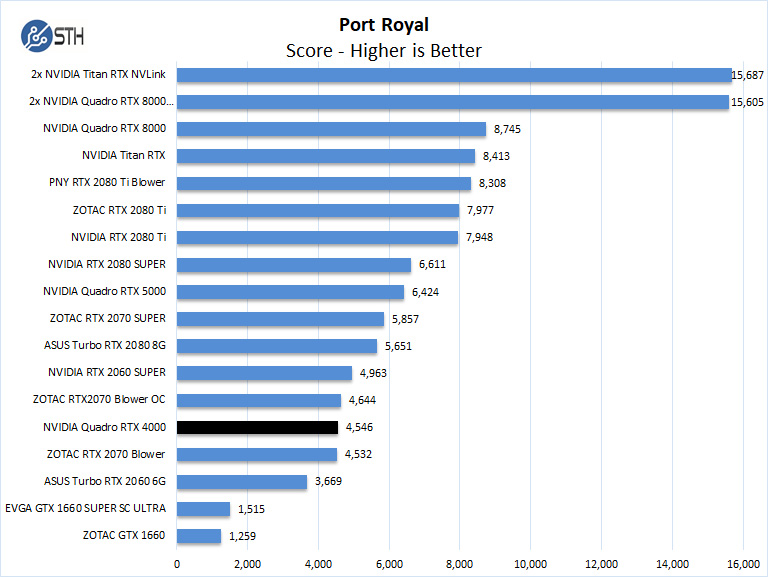
Here are the 3DMark suite results. We will discuss them after the charts.
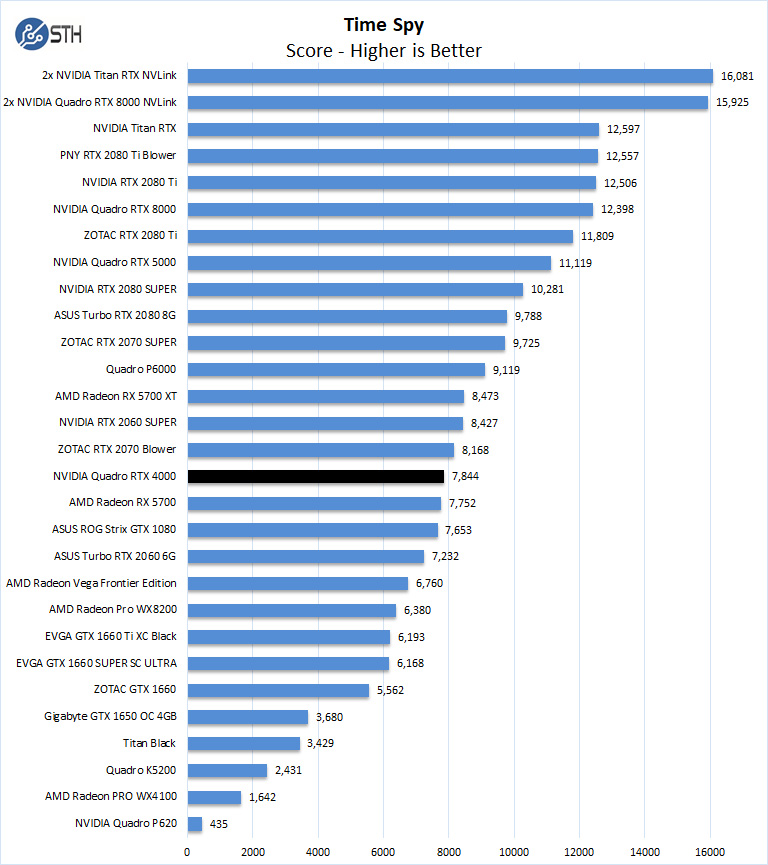
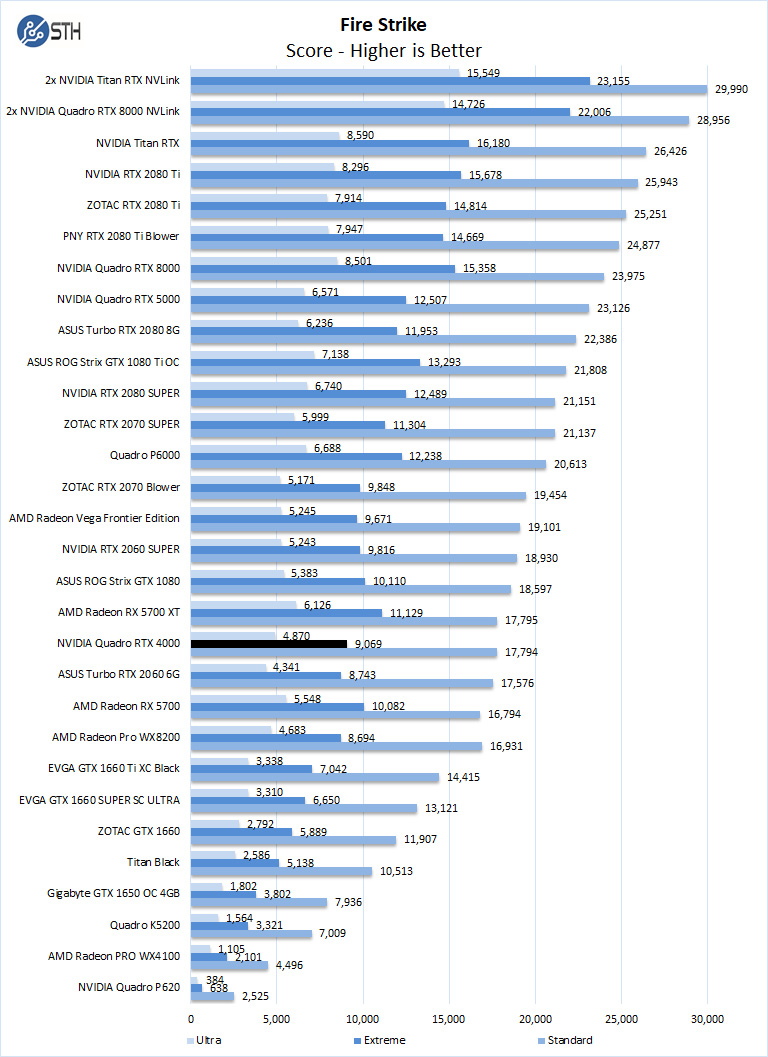
It is clear to see that single RTX 2000 series graphics cards have the price-performance edge in these tests. Another interesting data point is Port Royal, which gains a significant advantage by using NVLink. This can be useful for VR related applications. We tested both the NVIDIA Quadro RTX 8000 with NVLink and the NVIDIA Titan RTX with NVLink. Those, as we would expect, perform much better on Port Royal.
NVIDIA Quadro RTX 4000 Unigine Testing
Unigine is a well-known 3D engine, so we also test this as it has implications for game design but also for simulators and other applications.
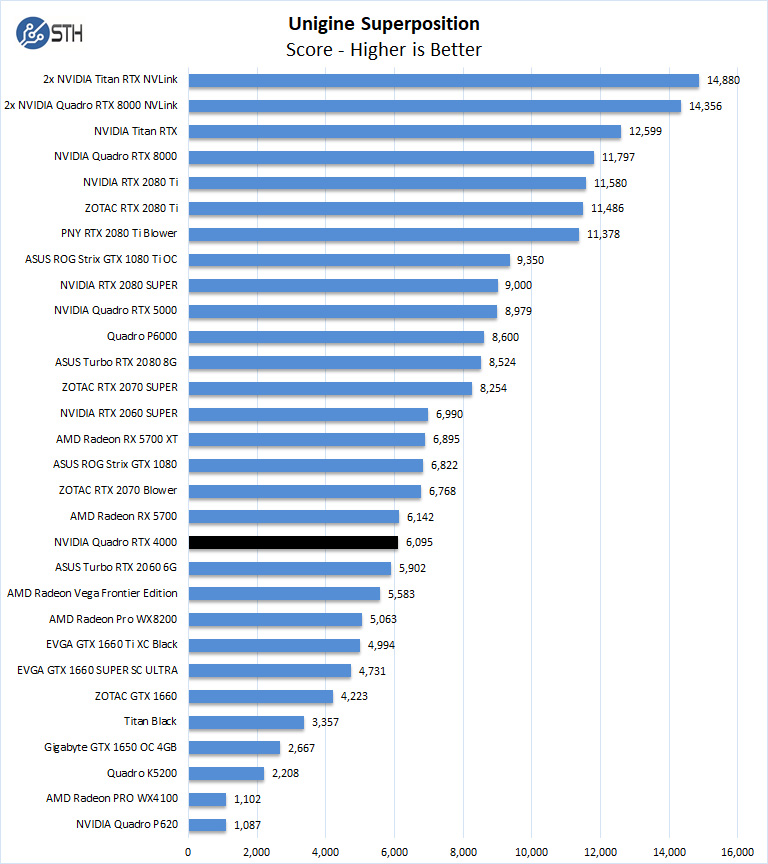
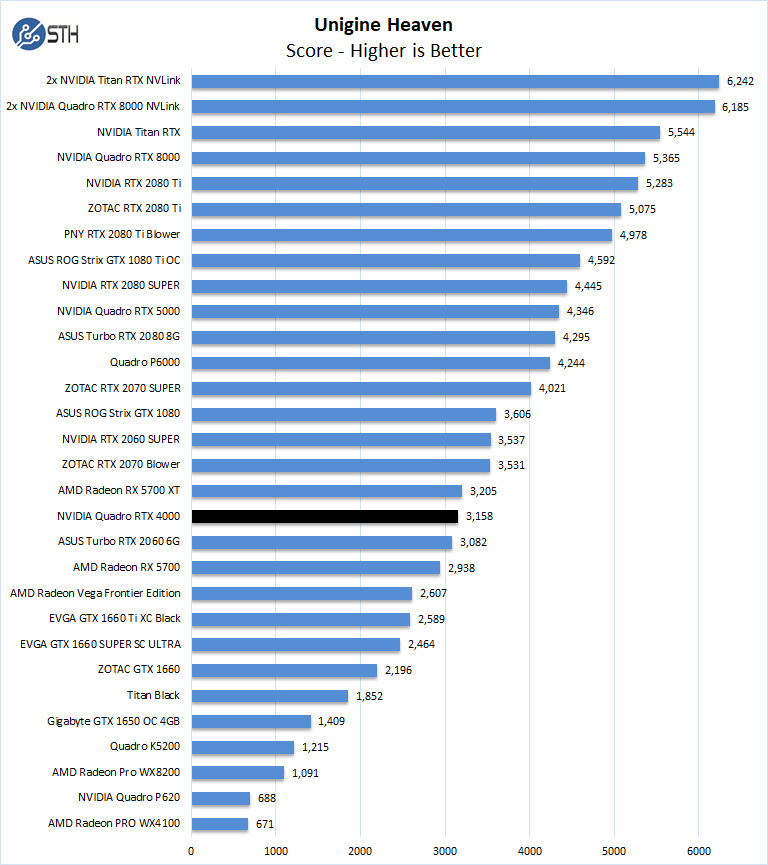
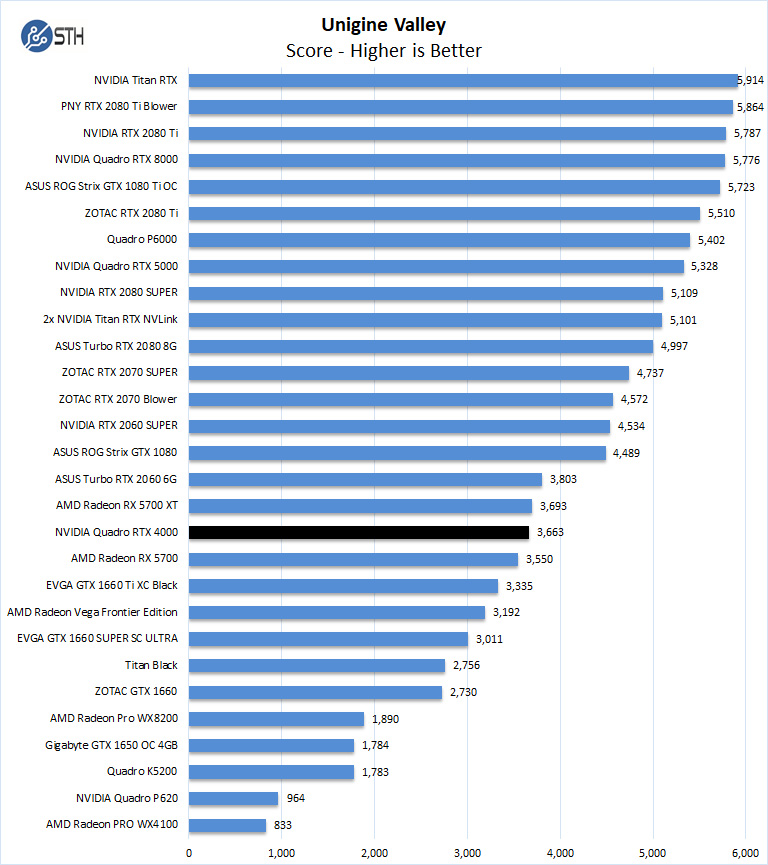
The NVIDIA RTX 2080 Ti and Titan RTX often perform better in these benchmarks, which have a hard time taking advantage of the Quadro line on GPUs and struggle with NVLINK or SLI performance. Still, the Quadro RTX 4000 performed decently well.
Next, we are going to look at the Quadro RTX 4000 with several Deep Learning benchmarks.




The Quadro RTX 4000 has served me well at work in an external Thunderbolt GPU chassis as a portable production GPU. It is an interesting use case as the raw GPU performance was not as critical as getting several check boxes marked on the feature set which precluded many of the lower end Quadros and made anything higher end pure overkill.
One of the requisite features was support for the Quadro Sync II board so that it can be gen-locked with various video production equipment. Since the Quadro RTX 4000 is a single slot board, the Quadro Sync II card fit in with the external GPU chassis. Note that the gen lock board can mount into a PCIe slot, all communication with the GPU card is done via ribbon cables. In a small tower system, I’ve rigged up the same genlock board inside a front panel bay to save on slot spacing.
One of the more interesting things I’ve recently tested has been with nVidia voice where this graphics card get pulled in to do some audio processing in recent months.
The one thing on my wish list for any future nVidia A4000 replacement card would be include Thunderbolt 4 ports on the GPU itself instead of Virtual-Link. It’d be far more useful and there are a handful of video production boxes with Thunderbolt 3 interfaces that could hypothetically communicate directly with the A4000’s hardware video encoders, reducing latency for real time encoding by a few critical hairs. Similarly, an HDMI 2.1 port would be valuable for the video production area that I’ve been involved in lately as a DisplayPort to HDMI adapter would not be necessary for display. Though for a multidisplay system where timing is critical, having all the ports leveraging the same adapters does equalize time vs. one native HDMI port and multiple DP ports with active adapters.
I have installed the NVIDIA RTX 4000 on my Intel s2600stbr motherboard with 256GB ram and two 10 core intel Xeon silver 4210 CPUs with windows 10 pro for workstations, and got the message after compatibility check that due to programs running in the background or OS incompatible, can anyone help with this.
I have an RTX 4000 in my Dell Precision T7610 with two 10 core Xeons and 128gb RAM. Very strangely the machine totally refused to boot up with the RTX card in the PCI-E 16x slot that in intended for the GPU card, so I removed it and put it in the lower PCI-E 16x slot and it’s fine. Bit weird but there we go.
It runs hot. Even with the case fans running fairly energetically it was in the 80’s on full load. I’ve put a slot-fan both above and below the card forcing more air to blow all over it and it’s shaved about 10 degrees off, much better. But now I’m using three slots for a single slot card, which defeats the object somewhat!
Lovely card though.